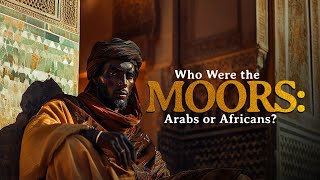Who Were the Moors?
The Moors were a Muslim people of North African and Arab-Berber descent who ruled parts of Spain, Portugal, and North Africa from the 8th to the 15th century. They played a major role in shaping European science, architecture, and culture during the Islamic Golden Age.
Origins & Identity
- The Moors were primarily Berbers and Arabs from North Africa (modern-day Morocco, Algeria, Tunisia, and Mauritania).
- They followed Islam and brought their religion, language (Arabic), and advanced knowledge to Europe.
- The name “Moors” was used by Europeans to describe Muslim inhabitants of the Iberian Peninsula (Spain & Portugal).
Moorish Rule in Spain (Al-Andalus, 711–1492)
- In 711 AD, the Moors, led by Tariq ibn Ziyad, invaded Spain and defeated the Visigothic King Roderic.
- They established the Caliphate of Córdoba, making Spain a center of science, medicine, art, and architecture.
- Major cities like Córdoba, Granada, and Seville flourished under Moorish rule.
Contributions of the Moors
Advanced Science & Medicine – They introduced astronomy, algebra, surgery, and pharmacology to Europe.
Architecture – Built iconic structures like the Alhambra (Granada) and Mezquita (Córdoba).
Agriculture – Introduced irrigation systems, citrus fruits, rice, and saffron to Europe.
Education – Established libraries and universities, preserving Greek and Roman knowledge.
The End of Moorish Rule (Reconquista, 1492)
- Christian kingdoms in Spain fought to reclaim their land in a long campaign called the Reconquista.
- In 1492, the last Moorish stronghold, Granada, fell to King Ferdinand & Queen Isabella.
- Many Moors were expelled or forced to convert to Christianity.
Moors’ Lasting Influence
- The Moors greatly influenced Spanish language, cuisine, architecture, and science.
- Spanish words like “ojalá” (hopefully) and “azúcar” (sugar) have Arabic roots.
- Their architectural styles still exist in Spain, North Africa, and even Latin America.


